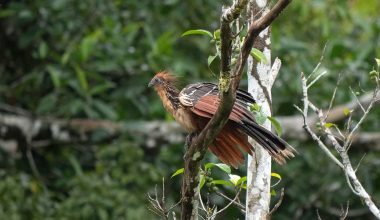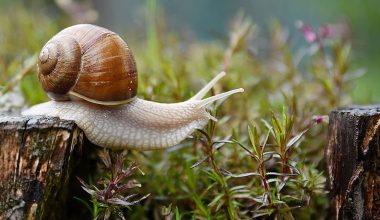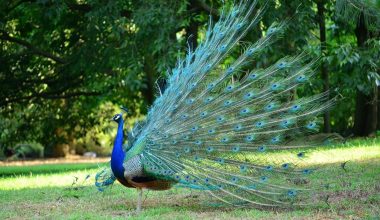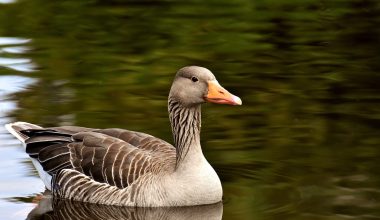Planet Earth is known for its own stories in different forms of natural wonders. Just like humans, forest animals do prepare for the winter months and there are animal species that migrate to warmer places. Here is the list of 10 amazing winter animals in the world,
Types Of Winter Animals In The World
1. Arctic fox
The Arctic fox is one of the amazing winter animals that belong to the canine family. As of now, 5 subspecies of arctic foxes are known to humans and can be easily identified in the regions of Iceland, Greenland, Northern Europe, Russia, Canada, and Alaska. The fluffy animal can reach upto 26 inches in length and weighs between 6.5 to 17 pounds.
Talking about the appearance one of the camouflaged animals has thick white fur during the winter and the skin turns into grey-brownish fur during the summer. There are seasonal variations in the color because that can help him in camouflage. The avarage lifespan of the Arctic fox is 3 to 6 years in the wild.

3. Chipmunk
The chipmunk is a type of ground squirrel that belongs to the squirrel family. It can reach upto 7.2 to 8.5 inches in length and weighs between 1.1 to 1.8 ounces. The largest known chipmunk can grow upto 11 inches in length and weighs upto 4.4 ounces. Talking about its appearance, it has red or grayish-brown fur with light and dark stripes on its back, sides, and head. It is also listed as one of the amazing animal species that starts with C
Their amazing fluffy tails can reach 3 to 5 inches in length. The is quite different from other squirrel species where it prefers to live in underground burrows which can be 30 feet long and 3 feet wide. The avarage lifespan of Chipmunks is 2 to 3 years in the wild.
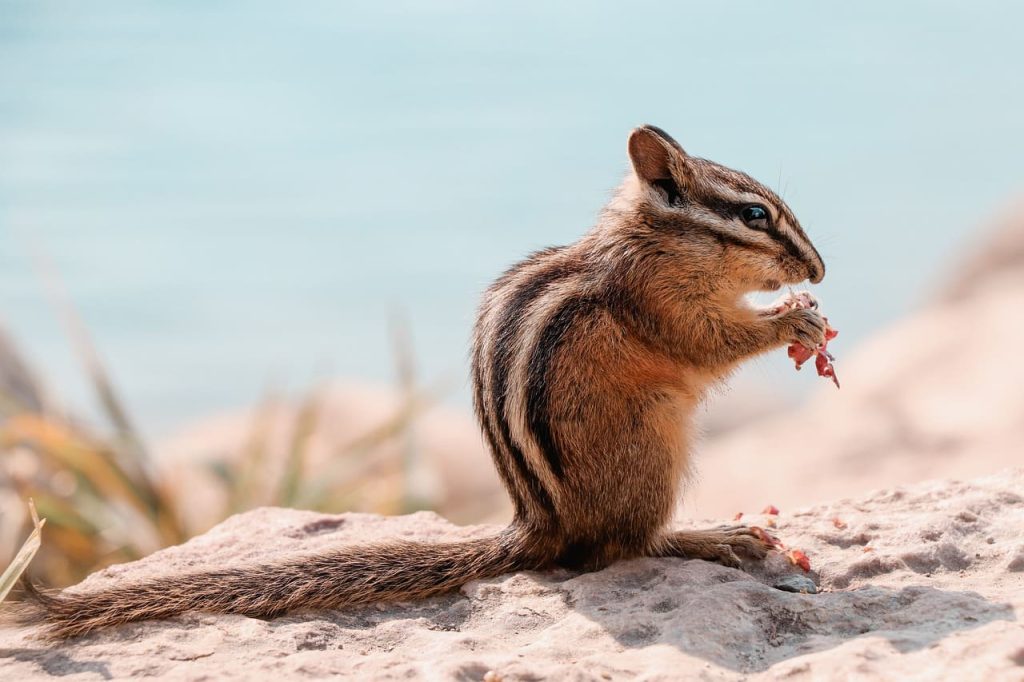
3. Groundhog
Groundhog also known as marmot or woodchuck is the largest member of the squirrel family. The animal species can be seen in the regions of northeastern and central parts of North America. It loves to thrive in the forest, fields, and areas near roads and human settlements. It can grow upto 16 to 26 inches in length and weighs between 4 to 9 pounds.
Talking about the appearance, the body is covered with grayish-to-brown fur. The skin coat has two layers of a dense undercoat and is long and coarse on the surface. Groundhog is a diurnal animal that is only active during the day. The avarage lifespan of a Groundhog is up to 6 years in the wild and 9 to 14 years in captivity.
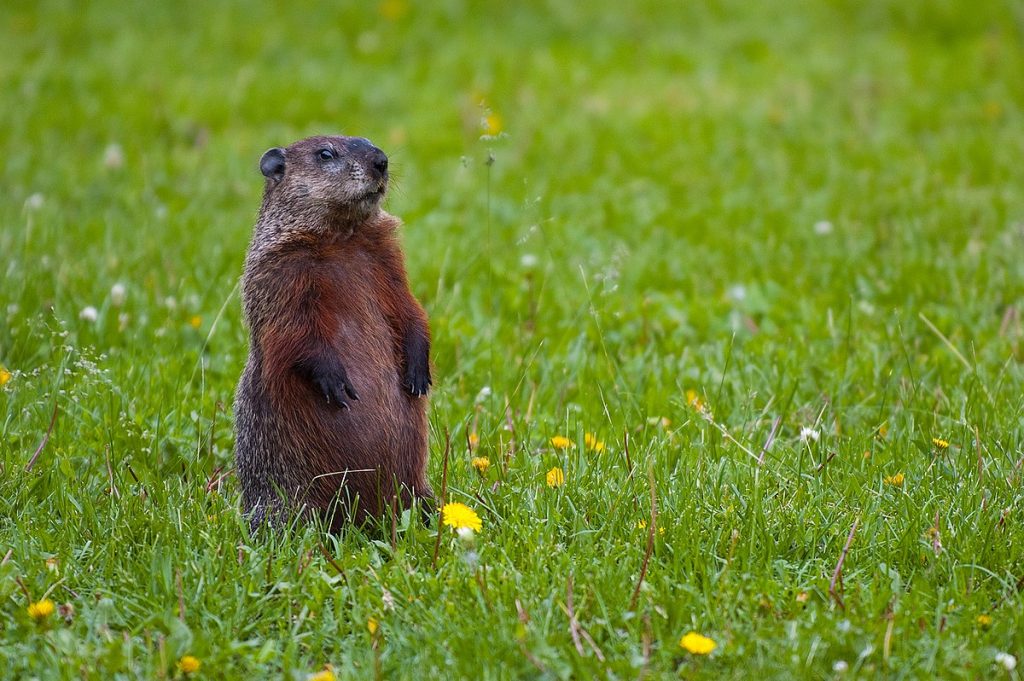
4. Snowshoe hare
The Snowshoe hare scientifically known as Lepus americanus is a species of hare found in the regions of North America. It is also known as the varying hare or snowshoe rabbit where snowshoe comes because of the large size of its hind feet. It is also one of the camouflaging animals where fur turns white during the winter and rusty brown during the summer.
The major predator of the species is the Canada lynx. The body of the Snowshoe hare grows from 413 to 518 mm (16.3 to 20.4 in) in length whereas the that grows in between 39 to 52 mm (1.5 to 2.0 in). The avarage lifespan of a snowshoe hare is 5 years in the wild.
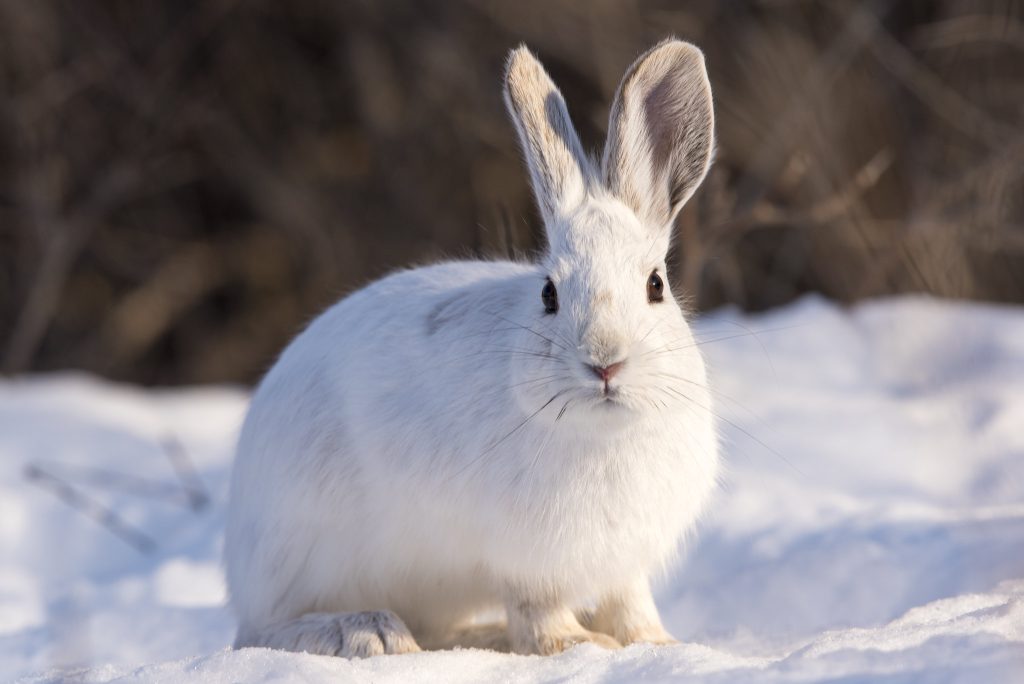
Image Source: Dave Doe
5. Snowy owl
The snowy owl is one of the types of owls in Southern California scientifically known as Bubo scandiacus is a large white bird native to the regions of North America and the Palearctic. The snowy owl is quite different from other owls because they are active during the day, especially in the summer season. The body size of the white animal can grow upto 20 to 28 inches with a total wingspan of 4.2 to 4.8 feet.
The average weight of a Snowy owl is between 3.5 to 6.5 pounds. These tundra biome animals are also represented in the cave paintings of Europe. The oldest known Snowy owl is a female who is at least 23 years, and 10 months old when she was recaptured and rereleased in 2015 during banding operations in Massachusetts. It is also one of the popular owls in Washington State.
Also Read: 10 Types Of Owls in Illinois
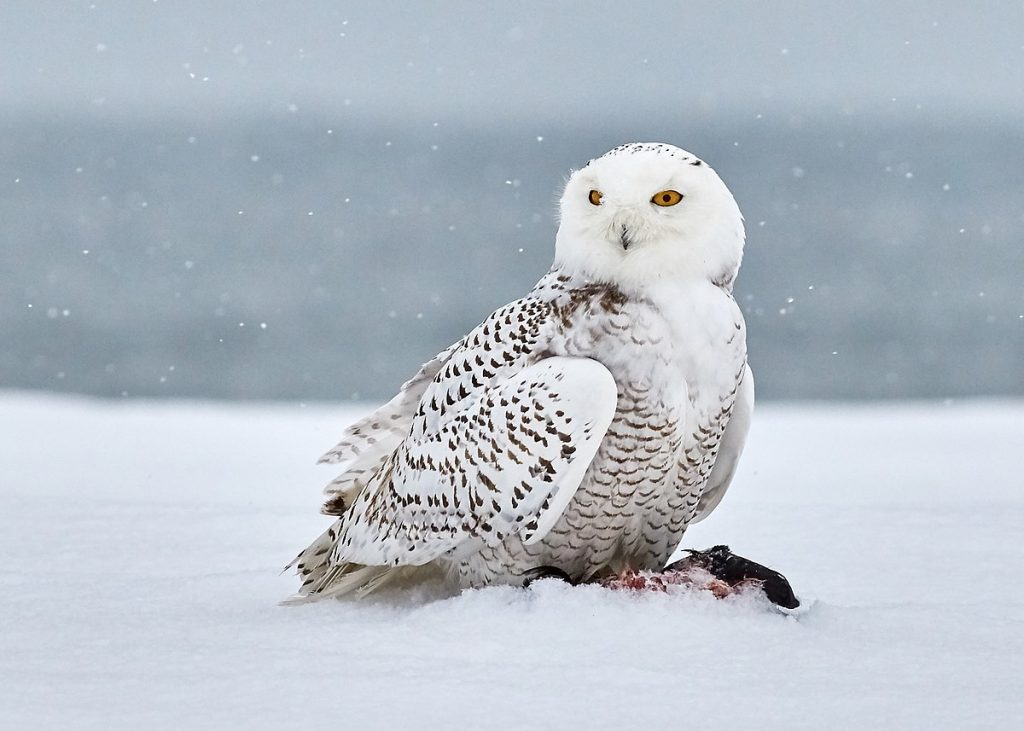
Image Source: Wikipedia
6. Rodent
Rodents are the largest group of mammals and can be seen across every corner of the world except Antarctica, New Zealand, and a few Arctic islands. Apart from rats and mice, rodents also include beavers, porcupines, squirrels, and marmots. The smallest known rodent is Delany’s swamp mouse which weighs between five to seven grams and the body size is between five to six centimeters long. The diet of rodents includes vegetable and animal matter. The rodent species who live in dry areas used to get their water from their food.
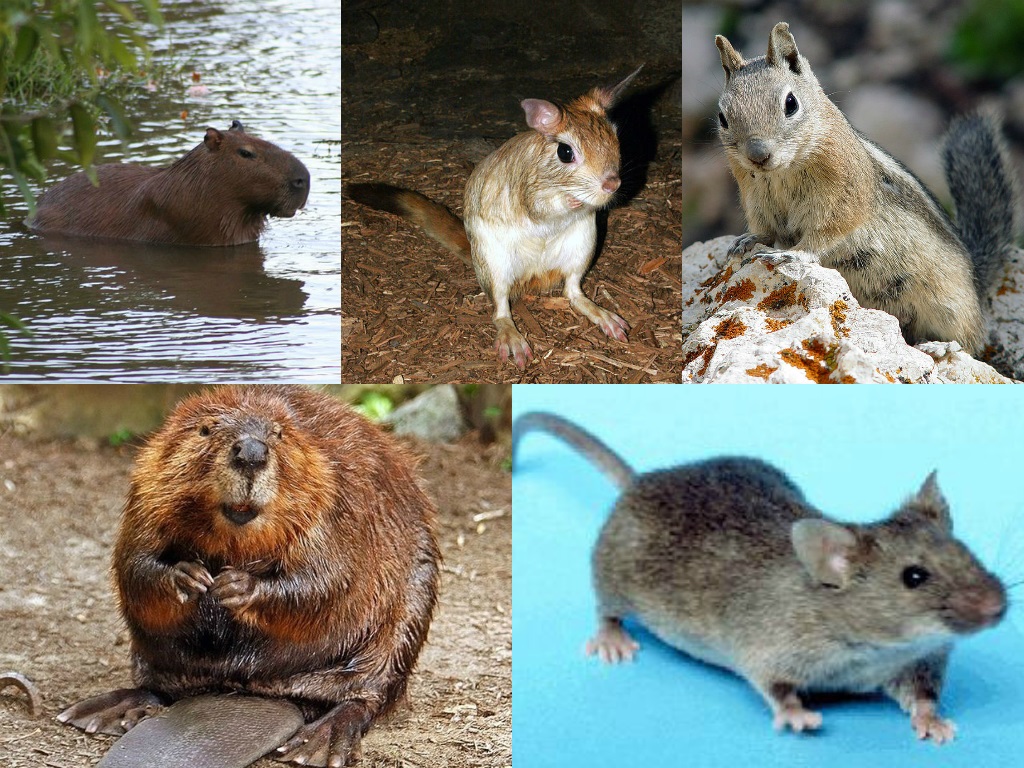
Image Source: Wikipedia
7. Stoat
Stoats are small mammals that are closely related to weasels. The species can be seen in the regions of the northern hemisphere and loves to thrive in wood; and grassland. The species used to prey on mice, voles, and small birds as well. The skin used to change color in the winter season when it turns all white except the tip of the tail which is always black, however, in summer the skin color is reddish brown with a creamy tummy. One of the amazing winter animals is also known as an ermine. The avarage lifespan of the species is 4 to 6 years in the wild.

Image Source: Wikimedia
8. Arctic hare
The Arctic hare is one of the amazing winter animals that look like a rabbit. As of now 4 subspecies of Arctic hare are known to humans and can be seen in the regions of northern parts of North America and Europe, on Greenland and the North Pole. It can grow upto 19 to 26 inches in length and weighs between 6 to 15 pounds of weight. The tail of the Arctic hare is 1 to 3 inches long.
Talking about the appearance, it has thick white fur where only the tip of the ears is black during the winter season, however, it is bluish-grey fur during the spring and summer. The avarage lifespan of the Arctic hare is 4 to 5 years in the wild.
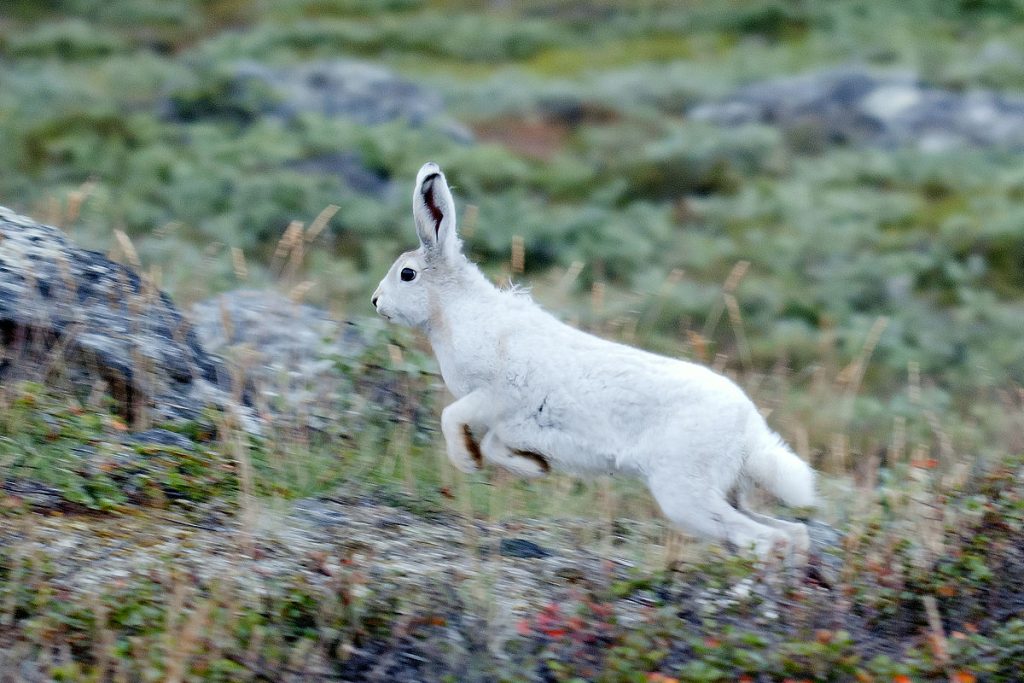
Image Source: Wikimedia
9. Willow Ptarmigan
The Willow ptarmigan is a medium ground-dwelling bird that can grow upto 35 to 44 cm and weighs between 430 to 810 gms. The total wingspan of bird species is between 60 to 65 cm. The avarage lifespan of the Willow ptarmigan is 9 years in the wild. The bird species is scientifically known as Lagopus lagopus and belongs to the pheasant family Phasianidae. It is also known as willow grouse and red grouse.

Image Source: Mick Thompson
10. Nymphalis antiopa
Nymphalis antiopa is also known as the mourning cloak in North America and the Camberwell beauty in Britain. The large butterfly species is native to Eurasia and North America. The immature form of nymphalis Antiope is also known as the spiny elm caterpillar. There are other old names for the butterfly species such as grand surprise and white petticoat.
Nymphalis antiopa has one of the longest lifespans of any butterfly species having an avarage lifespan of 11 to 12 months. This is also listed as the state insect of the U.S. state of Montana adopted in the year 2001. These are the most amazing winter animals in the world. Kindly share and post your comments.

Image Source: Wikimedia
11. European Robin
The European robin scientifically known as Erithacus rubecula is a small insectivorous passerine bird that belongs to the Old World flycatcher family. It is also known as robin or robin redbreast in the regions of Great Britain & Ireland. The bird species can grow between 12.5 to 14.0 cm in length with an average weight between 16 to 22 gms. It is one of the types of birds that chirp at night.
Talking about its appearance, both males and females are similar in coloration along with an orange breast and face colored with grey and brown upper parts and a white belly. The avarage lifespan of the European robin is short and it can live a couple of years only in the wild.
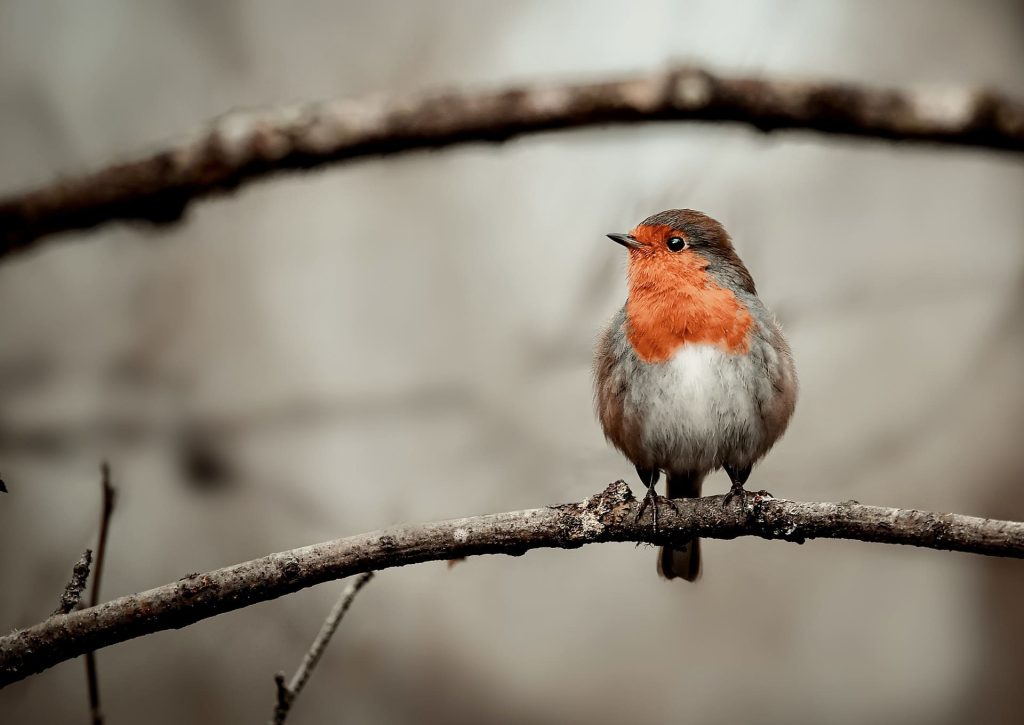
12. Wood frog
The wood frog is scientifically known as Lithobates sylvatica which can grow around 3 inches long. The frog species are widely distributed along the regions of Canada and parts of the US. They have a varied diet and feed primarily on beetles, spiders, snails, worms, millipedes, slugs, and other small invertebrates. The avarage lifespan of a wood frog is 3 years in the wild. The wood frog is one such amphibian that lives near the Arctic Circle and hene listed as one of the winter animals in the world.
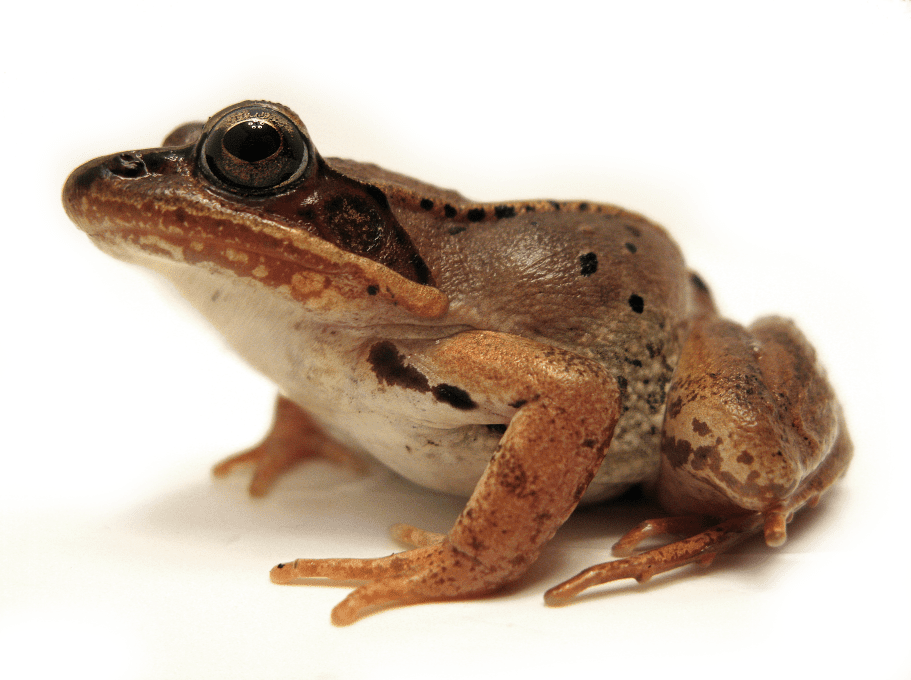
Image Source: Wikimedia
13. Hedgehog
Hedgehog is a spiny mammal that belongs to the family of Erinaceidae. As of now, 17 different species of Hedgehog are known to humans that are native to Europe, Asia, and Africa. It can grow between 6 to 8 inches in length and its avarage weight is between 0.5 to 1.25 pounds. A hedgehog is a nocturnal animal that is most active at night and usually sleeps during the day by hiding under the bushes or in the underground den. The avarage lifespan of a Hedgehog is 4 to 7 years in the wild.

14. Red squirrel
Red squirrels are one of the forest animals scientifically known as Sciurus vulgaris and can be easily recognized by their orange-red fur, however, thier coloration is quite variable from ginger to dark brown. The average lifespan of red squirrels is upto 3 years in the wild and up to ten years in captivity. The unique part of the red squirrels is that they have an exceptional sense of smell and are even capable of finding food buried underneath a foot of snow and even can smell rotten nuts without opening. Baby red squirrels are known as kittens and can even swim and hang upside down.
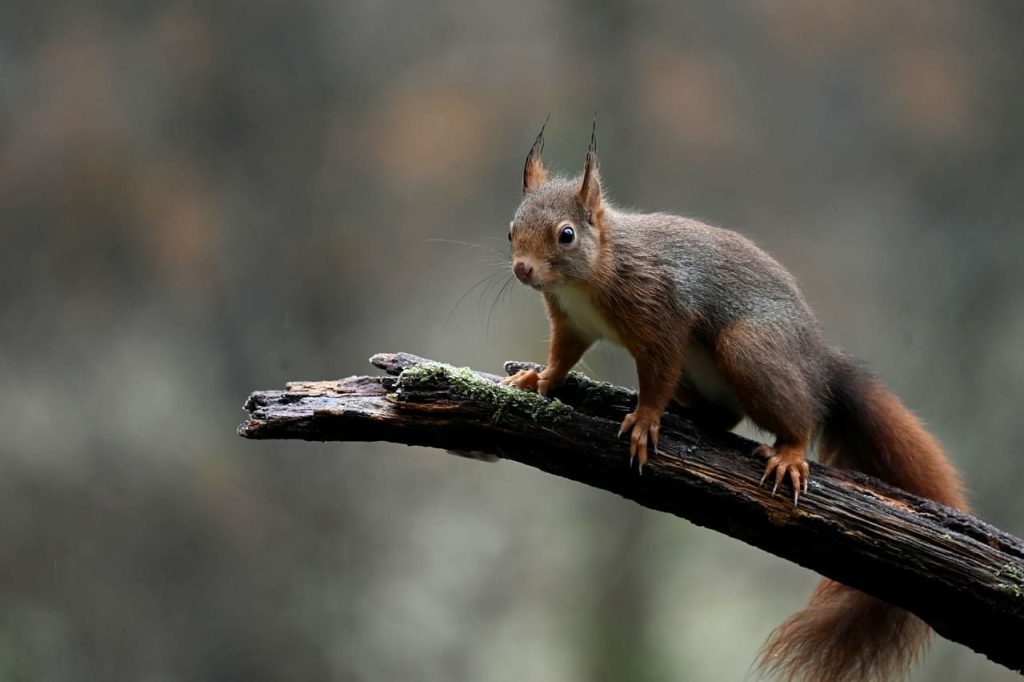
15. Little brown bat
The little brown bat also known as little brown myotis is a species of mouse-eared microbat mostly seen in the regions of North America. The bat species is closely related to the Indiana bat, northern long-eared bat, and Arizona myotis and has glossy brown fur. These brown animals can grow between 6 to 10 cm in length and on avarage between 5 to 14 gms. The avarage lifespan of the little brown bat is between 6 to 30 years in the wild. The total wingspan of the little brown bat is between 22 to 27 cm.

Image Source: J. N. Stuart
16. Ruffed grouse
Ruffed grouse scientifically known as Bonasa umbellus is a medium-sized grouse species mostly seen in the regions of the Appalachian Mountains from Canada to Alaska. These birds of new england are the only known species in the genus Bonasa. Ruffed grouse preys on fruit, buds, green leaves, and insects. It can grow upto a length between 16 to 20 inches and the average weight is between 450 to 750 gms.
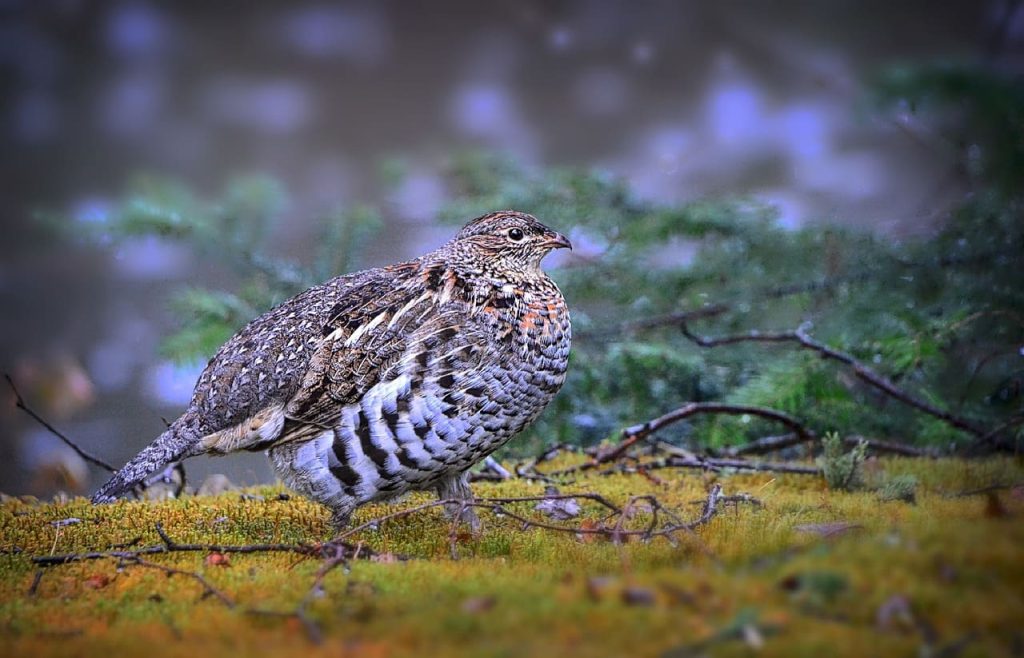
17. Fieldfare
The fieldfare is a member of the thrush family Turdidae. The bird species is mostly seen in the regions of northern Europe and across the Palearctic. The body length of fieldfare is upto 25 cm and the average weight is between 80 to 140 grams. These bird species are often seen in small colonies and during migration they are seen in large flocks. The dietary habit is omnivorous and feeds on snails and slugs, earthworms, spiders, and insects such as beetles and their larvae, flies, and grasshoppers. The average lifespan of fieldfare is between 2 to 10 years in the wild.
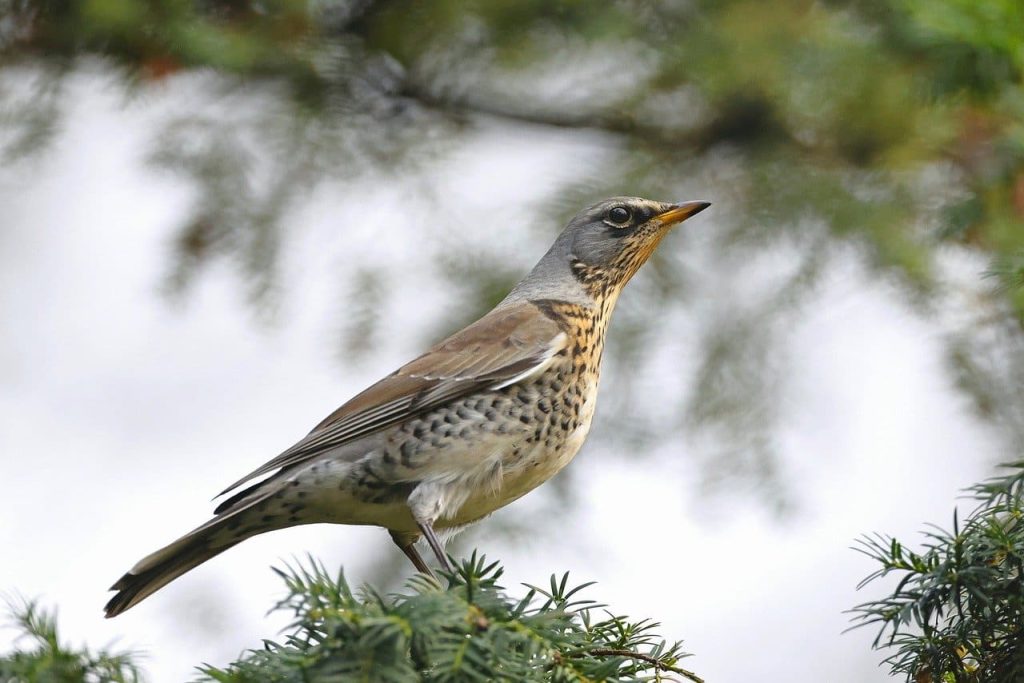
18. Musk ox
Musk ox is a type of cloven-hoofed mammal and one of the strongest animals that belong to the Bovid family. One of the winter animals is mostly seen in the regions of the northern parts of North America and Eurasia. They can inhabit cold Arctic tundra and managed to survive the end of the last Ice Age. The body length is between 4.4 to 8.2 feet in length and between 400 to 900 pounds of weight. The dietary habit is herbivores in nature and feeds on moss, lichen, roots, flowers, and grass. The avarage lifespan of a Musk ox is between 12 to 20 years in the wild.
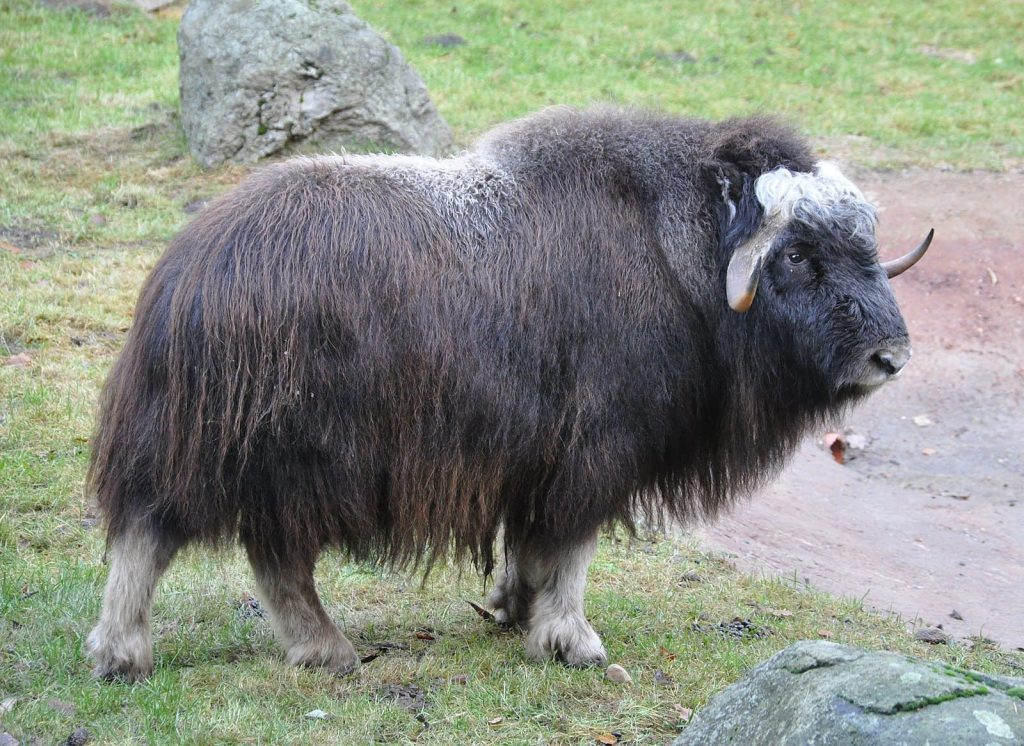
19. Bumblebee
Bumblebees are close relatives of honeybees and belong to the family known as Apidae. As of now, 250 different species of bumblebees are known to humans that inhabit the northern hemisphere mostly and hence are listed as one of the winter animals in the world. The body length is between ¾ to 1 inch in length and the entire body is covered with tiny hairs and alternately arranged yellow and black bands. They are mostly attracted by blue and violet flowers and their lifespan depends on the type of bumblebee.
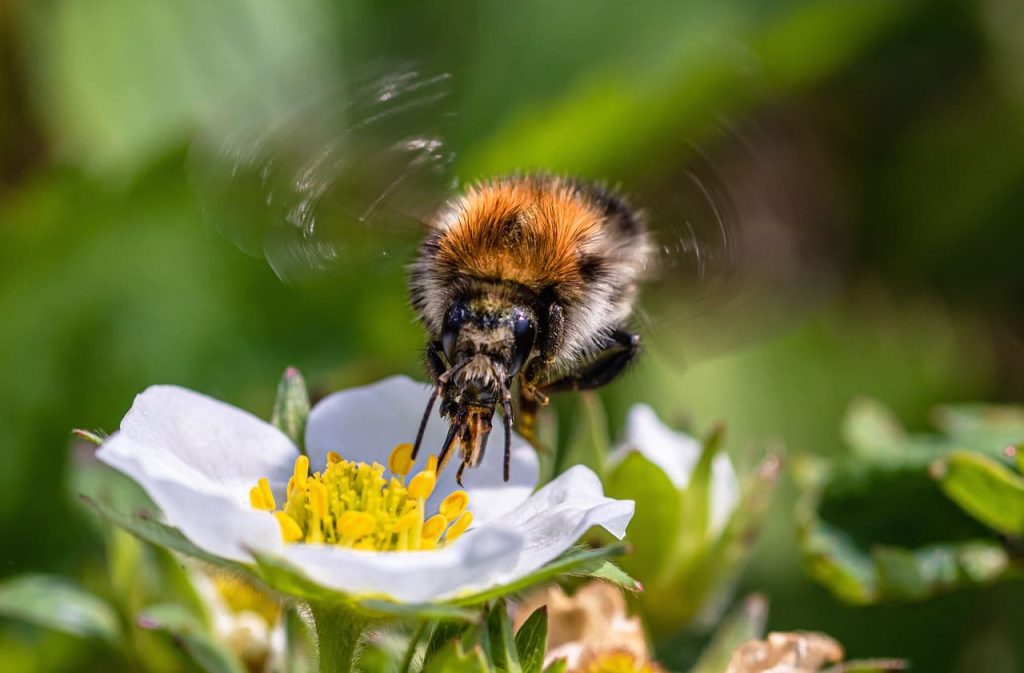
20. North American river otter
The North American river otter is a semiaquatic mammal that thrives along its waterways and coasts. The body length of North American river otters is between 60 to 100 cm in length and the average wieght is between 6 to 9 kilograms. The avarage lifespan of a North American river otter is between 14 to 25 years in the wild. These animal species live in burrows and like most predators, prey upon the most readily accessible species. The dietary habit is carnivores in nature and feeds on amphibians, turtles, fish, crayfish, crabs, and other species of invertebrates.

Image Source: Wikimedia
21. Hazel Dormouse
The hazel dormouse also known as the common dormouse is a small mammal and the only. They are living species of genus Muscardinus. The body length of a hazel dormouse is between 6 to 9 cm and the average weight is between 17 to 20 grams. The avarage lifespan of hazel dormouse is between 3 to 6 years. The coloration of the fur is bright golden on the back and pale creamy on the underside and it differs from mice by the characteristic long, fluffy tail.
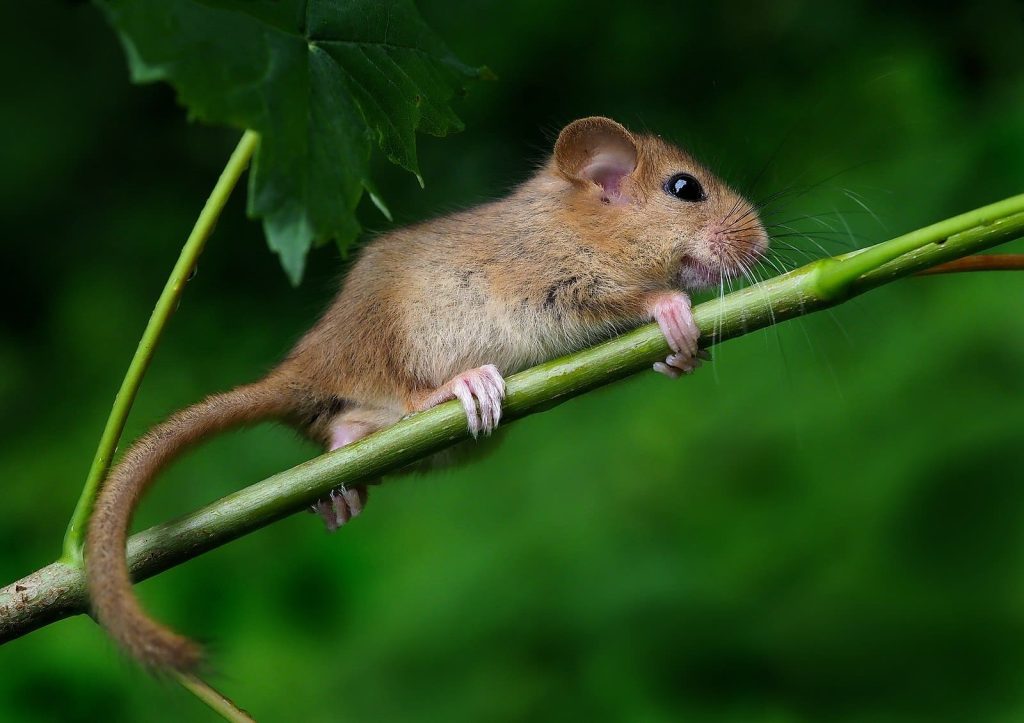
Image Source: Wikimedia
22. Polar Bear
The polar bear is one of the types of bears and animals of the polar region who prefer the pack ice of the Arctic Ocean. During the summer season, these white animals move ashore from a sea where the sea ice melts completely and may scavenge to avoid starving and even stay fast until ice forms again. These taiga animals have mouths full of 42 extremely sharp teeth and are popular animals with small ears. The apex predator has strong and sharp claws, which are important for gaining traction, digging through ice, and killing prey.
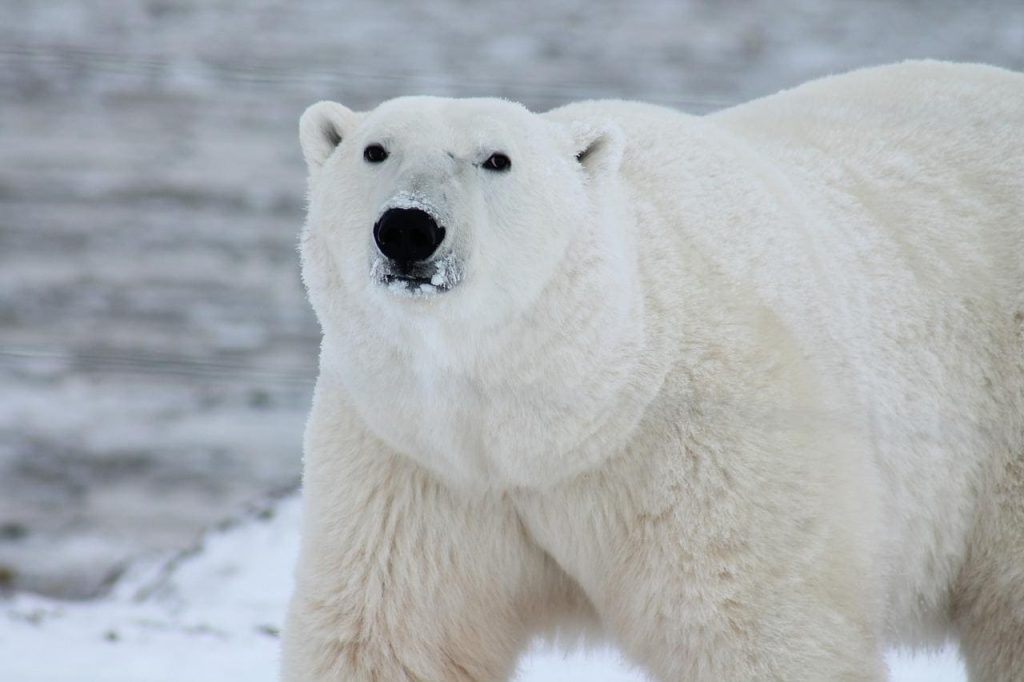
23. Snow Leopard
Snow Leopard is one such animal that loves to be tuned into a region known for its light green or grey eyes, which is quite unusual for big cats, and yellow or gold eyes. These endangered animals were seen at an altitude of between 3000 and 5,200 metres (9,800 and 17,000 feet) in Central Asia, including the Himalayan Mountains in the countries of Nepal, India, Pakistan, Mongolia, China, Afghanistan, and Russia. These solidarity animals are able to reproduce at 2 and a half years old. Thereafter, 2 or 3 cubs are born in spring or early summer in a well-concealed den lined with the mother’s fur.
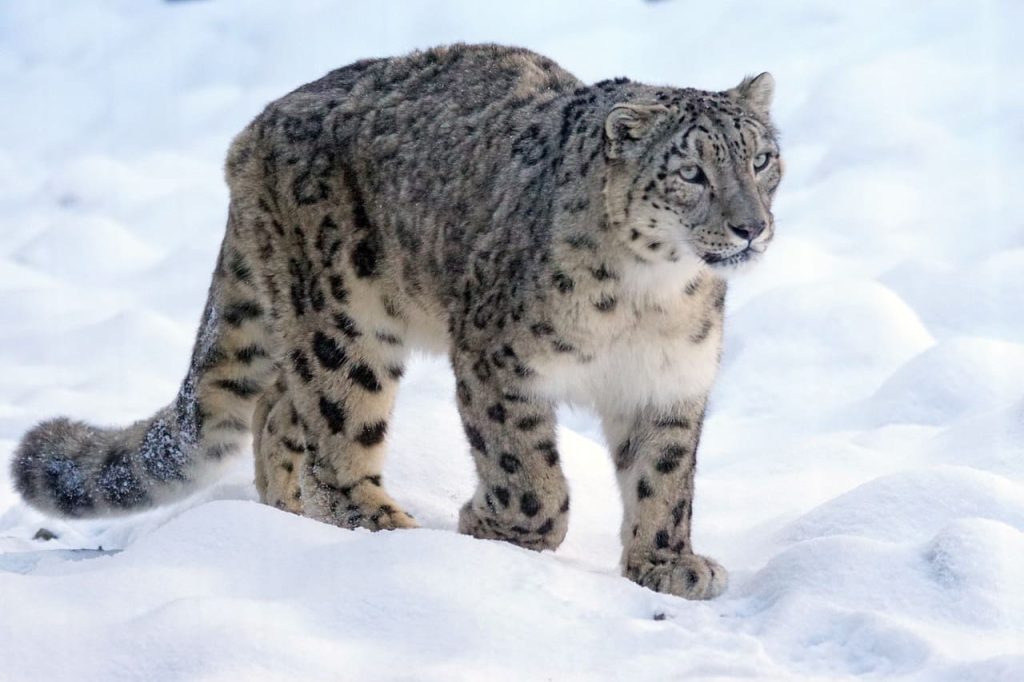
24. Emperor Penguins
The emperor penguin is the largest species of penguin and spends its entire life on Antarctic ice and in its waters. Both male and female are similar in plumage and size and can reach up to 1.1–1.3 metres, and their average weight is between 22 and 45 kilograms. These animal species have special adaptations to survive the low temperatures of Antarctica and have several layers of scale-like feathers that protect them from icy winds. The primary diet consists of fish, krill, squid, and crustaceans.

25. Walrus
Walrus is one of the types of aquatic animals that prefers areas with shallow water so they can easily access food. These slow-moving marine mammals love to spend the majority of their time in or around water. These land and water animals migrate north during the summer and south in the winter. The average lifespan of a walrus is between 30 and 40 years in the wild. The animal species can be identified with the help of a rounded head, small eyes, long tusks, and no external ears. There is various research suggesting that they are very social animals and among the most gregarious of animals.

26. Caribou
Cariboun is a large mammal and one of the winter animals that can reach up to 240 to 700 pounds in weight and between 4 and 5 feet of height at the shoulder. They are among the fastest animals that can run at a speed of 50 miles per hour, especially when trying to escape from predators. The mating season in Caribou takes place from September to November. Male species in the herd used to fight with each other before the most dominant male got the opportunity to mate with females.
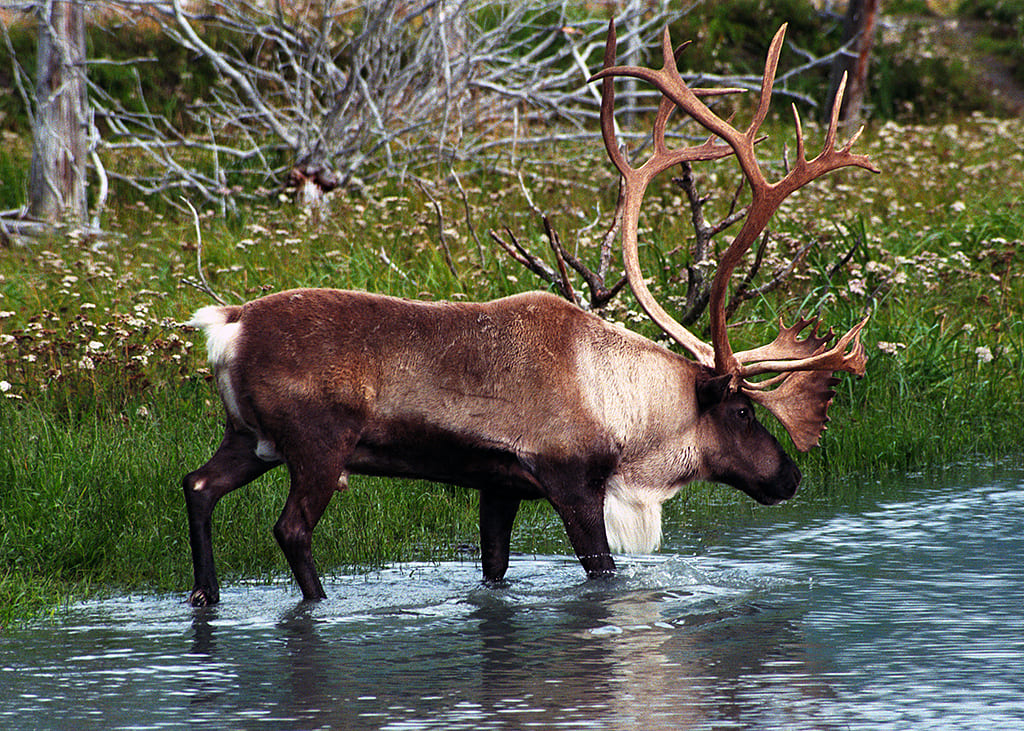
27. Beluga Whale
Beluga whale is among the fish with big foreheads that prefer to live in the coastal waters of the Arctic Ocean and in the subarctic regions. These species will migrate towards the south when the temperature of the water drops to the warmer region. The dietary habits of belugas are that they are carnivores in nature and feed on shrimp, fish, and sea worms. The belugas are born in estuaries where rivers meet the ocean and are muddy. The baby beluga is dark in colour, which helps him to hide from predators and survive his early days.
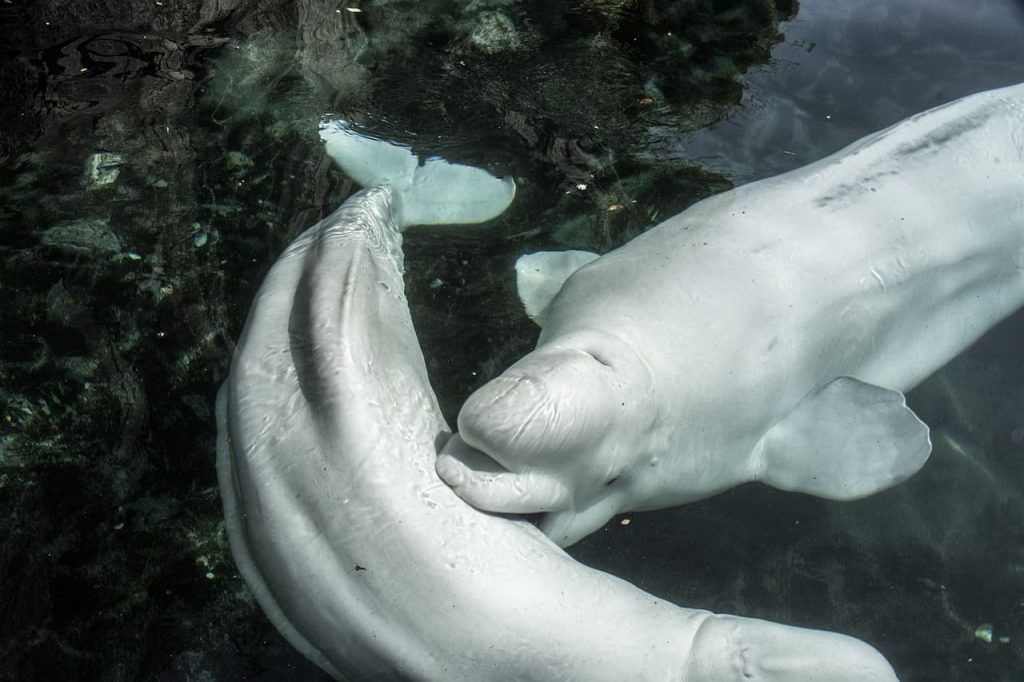
28. Harp Seal
Harp seals are among the animals with the thickest skin and spend the majority of their time in coastal ocean waters near pack ice. It is one of the best-known seal species and is most abundant in the northern hemisphere. The adult harp seal can grow up to 1.7 to 2 metres long, and its average weight is from 115 to 140 kg, where males are slightly larger than females. The primary diet of harp sea includes capelin, polar and Arctic cod, herring, sculpin, Greenland halibut, redfish, and plaice.
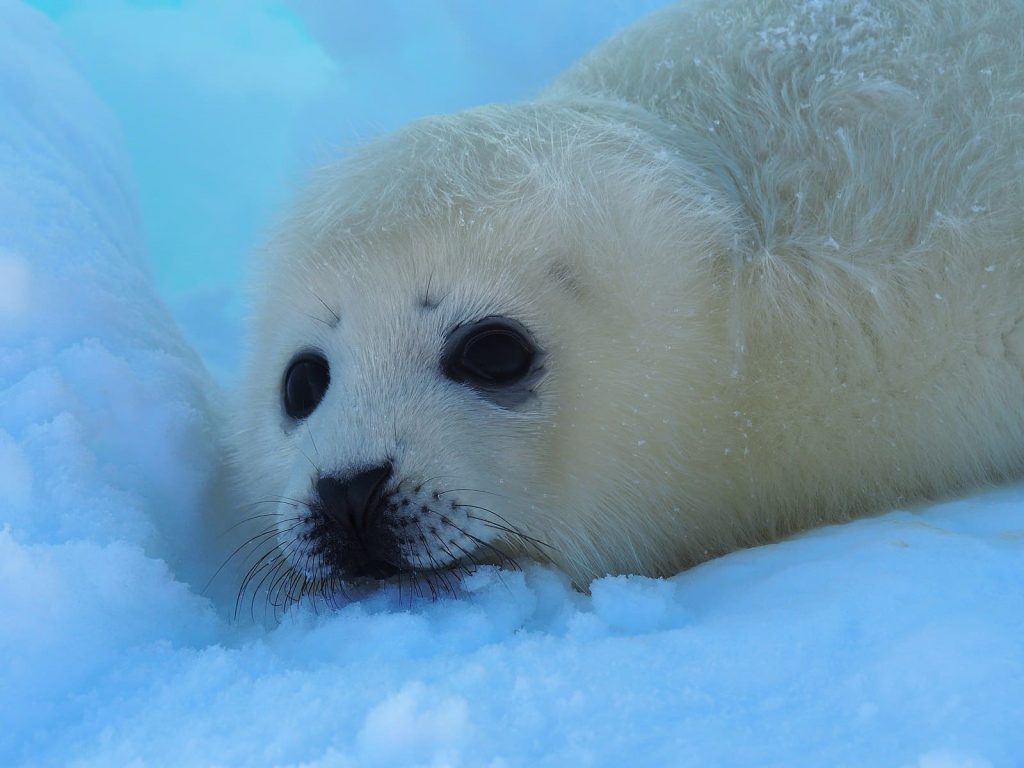
29. Black-capped chickadee
The black-capped chickadee is among the small grey birds with white bellies, where both males and females of this species look alike; however, males are slightly larger and longer than females. These bird species prefer to thrive in deciduous woodlands, cottonwood groves, open woods and parks, and willow thickets. They are seen in small flocks and are very active during the day. It is not considered a threatened species. However, the removal of dead trees in great numbers due to excessive forest management can be a threat to bird species.
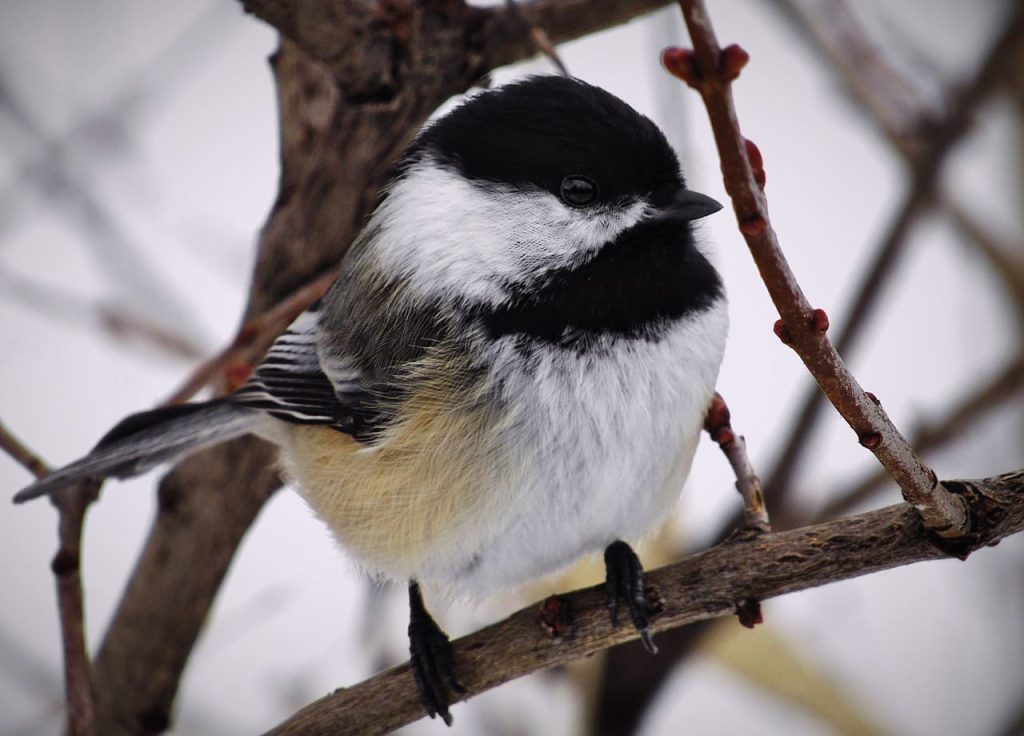
30. Canada Lynx
The Canada lynx, also known as the North American lynx, is one of the winter animals native to North America. They are found across Canada and Alaska, extending into the United States portion of the Rocky Mountains. The average lifespan of the Canada lynx is 10 to 14 years in the wild; however, in captivity, it can reach up to 26 years. The animal species is nocturnal, meaning they prefer to hide and sleep in secluded haunts such as rock crevices, caves, or thick tangles of fallen trees and brush and hunt during the night.
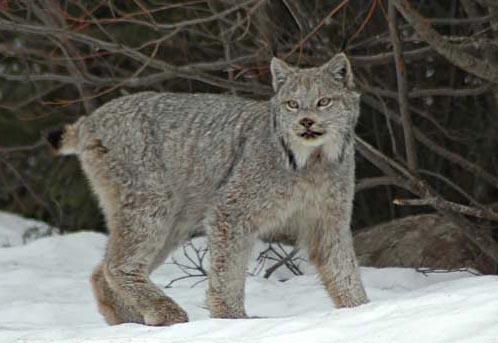
Image Source: Oregon State University
31. Ringed Seal
The ringed seal is among the smallest and most common Arctic seals and gets its name from the small, light-coloured circles, or rings, scattered throughout the darker hair on their backs. These seal species reach between 3.6 and 5.7 feet (1.1 and 1.7 metres) and weigh between 70 and 270 pounds (30 and 120 kilograms). They live in the regions of the Arctic Sea and the North Pacific Ocean, as far south as Japan. The primary diet includes fish, crustaceans, and cephalopods.
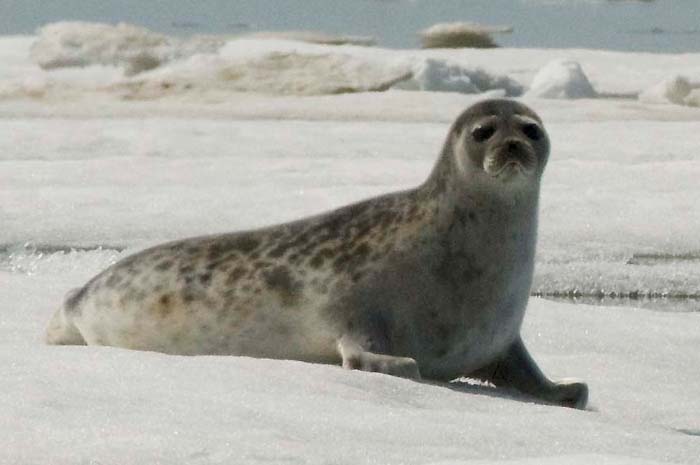
Image Source: Wikimedia
These are the most amazing 31 winter animals list in the world. Kindly share and post your comments.

